Avenues closed shortly after my review. I'd like to think the two things are cionnected but I doubt it. Avenues will not be missed, and will become a hotel ballroom. The notes below are for historical interest only.
Avenues is on the fifth floor of the Peninsula hotel, a restaurant with a formal dining room with wood panels and generously spaced tables. There is an open kitchen in one corner, with a few bar stools directly overlooking the culinary action. In a luxury hotel, and in such a room, one might expect quite traditional food, but nothing could be further from the truth. Chef Curtis Duffy was a sous chef at Alinea, and the menu here reflects his molecular gastronomy background. A full eight course tasting menu was $135, while a vegetarian version was priced at $115. As an alternative you could choose any of these dishes a la carte, which is the way that we went this evening.
The wine list was extensive, 54 pages in a thick tome. Example wines include Leeuwin Estate Margaret River Riesling 2004 at $55 for a wine that retails at around $22, Tete de Cru Fuisse Chateau Fuisse 2008 at $110 for a wine you can pick up in the shops for $40, and Etude Heirloom Carneros 2005 at $198 for a wine that costs $87 in the shops.
An amuse-bouche was sea urchin (from Santa Barbera) with rhubarb puree and hoja santa (a herb) leaf pearls that had been frozen in liquid nitrogen. I found the sea urchin to be of disappointing quality compared to others than I have eaten (for example in Japan or the Mediterranean), while the effect of the freezing of the leaf pearls meant that my impression was that I was eating barely defrosted frozen peas. The rhubarb puree had an unnatural texture that I suspect may have been due to a chemical additive; combining these elements together did not enhance the dish, the overall effect seeming to me just confusing (12/20 at best).
Breads were made from scratch here, A baguette was decent enough with a reasonable crust, though the texture of the bread was a little odd (14/20), A starter of tom ha gai was a Thai soup with limes, lemongrass and coriander blooms, and suffered from being lukewarm. The broth itself was pleasant enough, but did not compare well to Thai soups I have had elsewhere, either in Thailand or elsewhere (12/20) or so.
A dish of Alaskan king crab was topped with a thin edible film, with lemon mint and trout roe, as well as various herbs, in a cold soup that tasted mainly of cucumber. There were several distinct flavors that came through, especially from the herbs, but these tended to overwhelm the delicate flavour of the crab (13/20).
A main course of cauliflower with meringue, Swiss chard and yuzu and black cardamon had perfectly pleasant cauliflower, and some chewy mushrooms that were in part warm and in part cold, an odd and flawed dish (11/20). Much better was wagyu rib eye with smoked paprika, spring ramps and garden mustard, as well as a cylinder of potato. The beef was of good quality, but the smoked paprika was for me rather distracting, though the mustard notes were a logical balance to the beef, which was properly cooked (15/20).
A pre-dessert was sudachi (a green citrus fruit) wrapped in a cocoa butter shell, presented for some reason on a log and topped with mint. This was well made and pleasant enough (14/20). My dessert of chocolate ganache was served with blood orange sorbet, hazelnut cake and huckleberries, with vanilla and stevia instead of sugar to add sweetness. This was quite prettily presented, and the chocolate was of high quality; in this case the elements made coherent sense together (chocolate with orange) and this was an enjoyable dish (15/20).
Coffee was quite good, supplied by a Seattle coffee company called Fonte. This was served with a trio of chocolates. Each was of a different colour, representing that each came from a different country: Madagascar, Bolivia and somewhere in Africa (the waitress did not know which country) respectively. These were chocolates pure and simple, and very good, quite a relief after some of the earlier dishes (16/20).
Service was friendly yet with flaws. In particular, no one asked at any stage of the meal whether we actually enjoyed the dishes, including when one dish was left virtually untouched. Surely even at a quite basic restaurant, if a customer leaves most of a dish then it would be reasonable to inquire as to whether there was a problem? Not here. Bizarrely, at the start of the meal we were offered a choice of either a black or a white napkin; I am not sure what this was all about, but the slightly surreal nature of this request seemed to me an unconscious symbol of the lack of coherence of the meal. The bill came to $120 per person.
As I got up to leave I overhead the diner at the next table say to his companion "this tastes like eating dry wall" - I am assuming that this was not intended as a compliment. To me this meal reflects some of the worst aspects of the molecular gastronomy movement: in the hands of the genuinely talented it can be exciting, as can be seen at restaurants such as Oud Sluis or The Fat Duck. In less skilled hands than these it can seem like a chef showing off technical trickery without regard for the overall success of the dishes. For me Avenues was a culinary cul de sac.















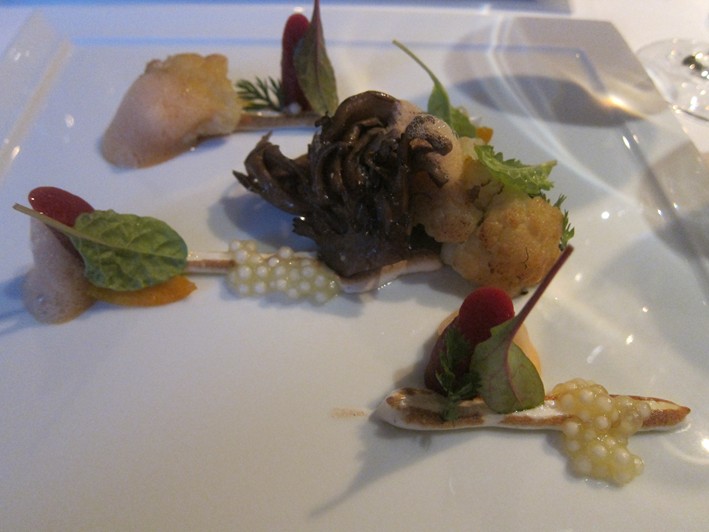
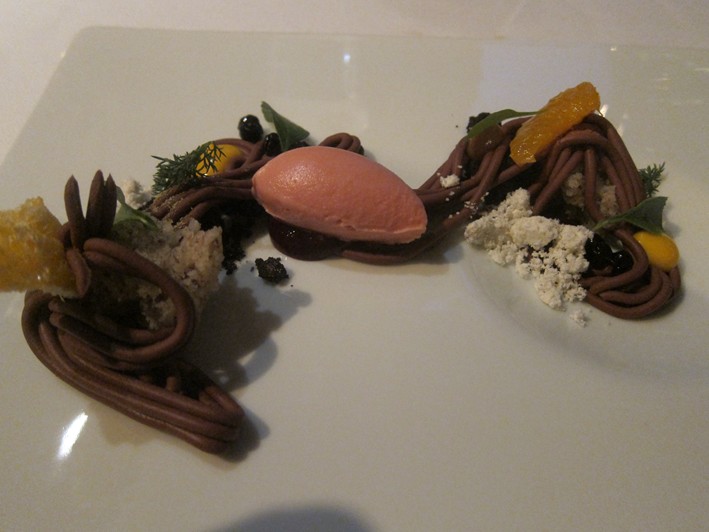
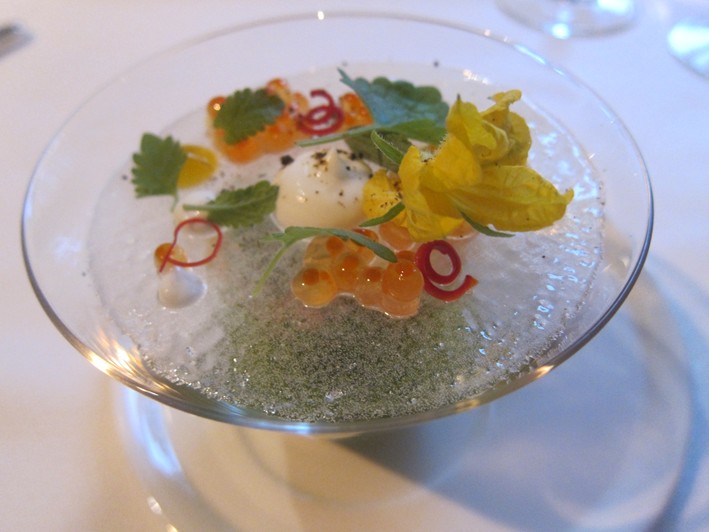
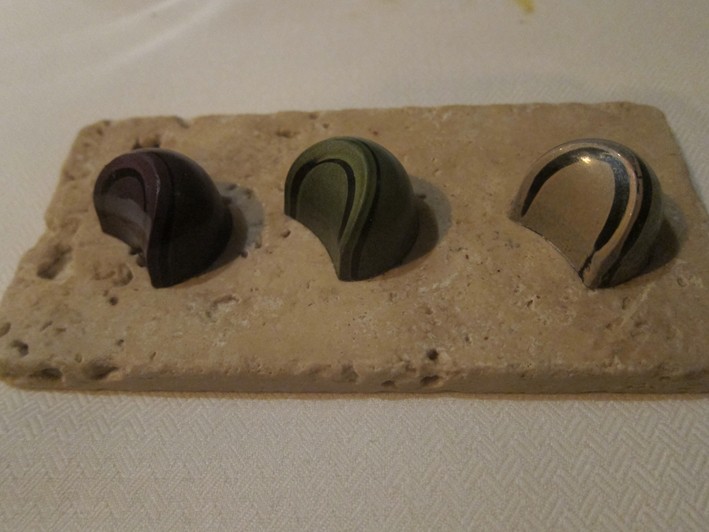
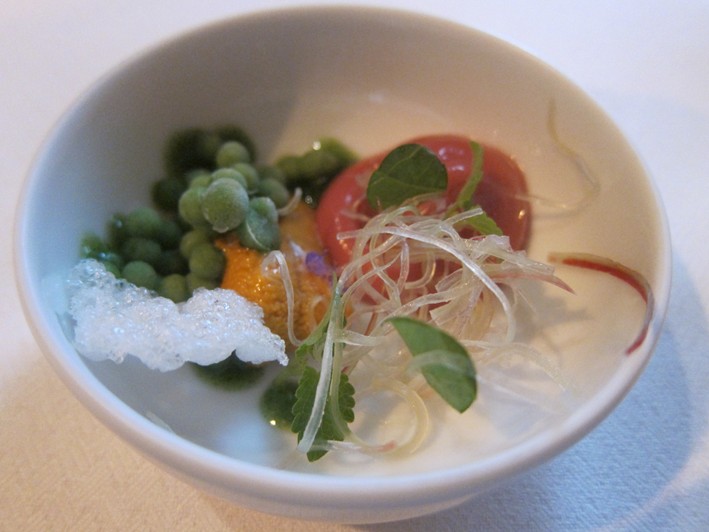

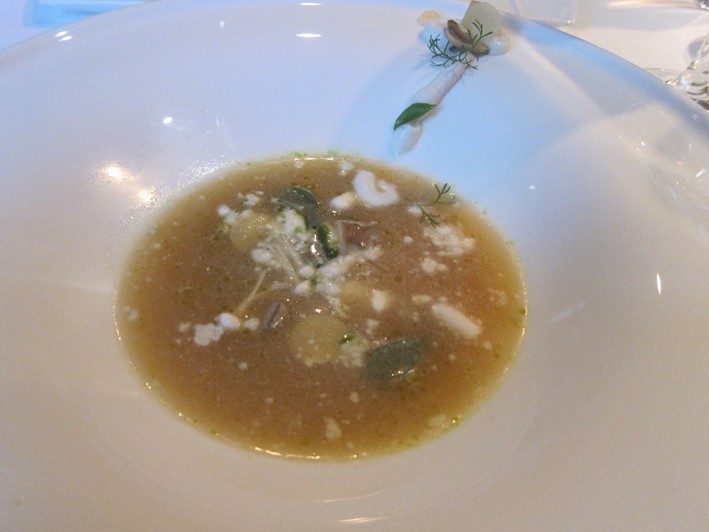
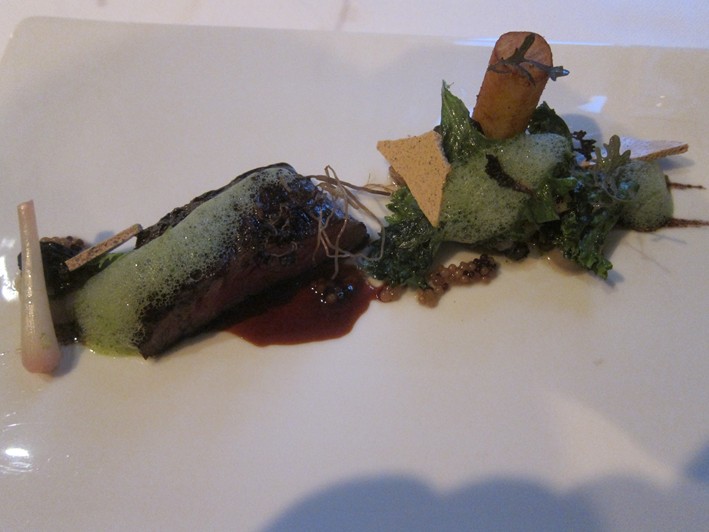
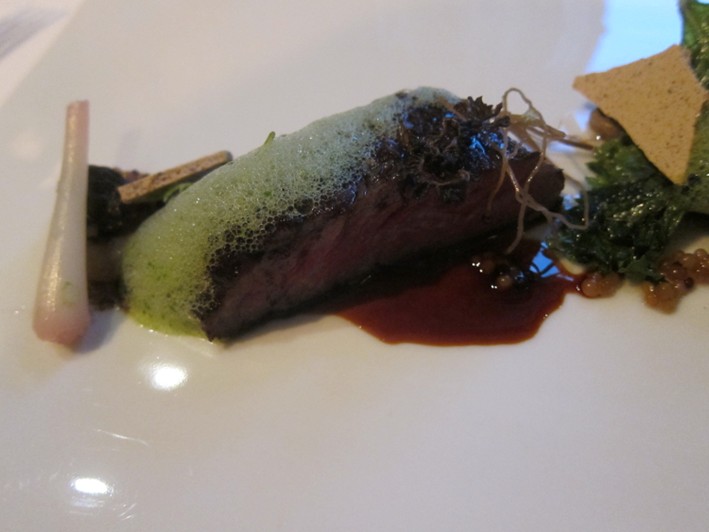


Paul Richardson
Hi Andy, The napkin colour choice is a common one it you are wearing dark clothing you may not want any fluff from the white napkin and vice versa. Experienced this in a few restaurants - I think in Caprice in HK. P